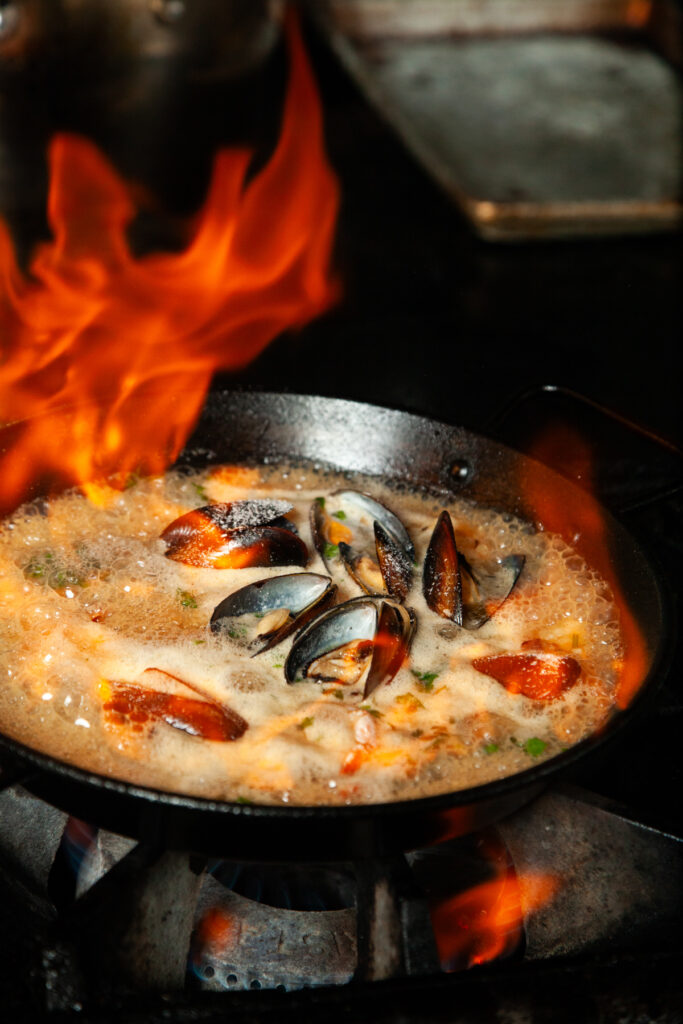
Home Is Where the Heaping Plate Is: Coya
Story by Zoe Elliott Shaw
Photography by Jennifer Olson
When she first arrived in America from Peru three years ago, Jhackeline Vargas quickly decided that San Luis Obispo would be her final destination. “I fell in love with the coastline, the views and the small, green mountains everywhere. It reminded me of Lima. It felt like my new home,” says Jhackeline. But this new home was missing a part of her old one. “I was looking around for influences of Peruvian food but I didn’t find them. I thought, ‘This place needs more authentic Peruvian cuisine,’ so I had to make it!”
Jhackeline’s distinctively Peruvian accent is as charming as her joyful hospitality and passion for the cuisine of her country. Before becoming a chef, Jhackeline worked as a fermentation engineer of industrial elements. Just one year after landing on the Central Coast, she opened Coya.
The definition of the word “coya” is, much like Peruvian cooking, deeper than a few words. Those who get the chance to sit at the simple table in the middle of a liquor store and eat an array of Jhackeline’s food while she explains its origin might agree. In Quechua, the native tongue of the Inca civilization, coya translates in English to “queen.” Quechua became an official language in Peru in 1975. A coya pasca was a “chosen woman” selected by Incan officials, to be prepared for the status of high priestess.

That includes empañadas and tamales, which are found in the deli case. Around the lunch hour, she receives an order for four ceviches and pours a 1 ounce shot of leche de tigre, her classic bright and spicy citrus-based Peruvian marinade. “In Peru, sometimes we have leche de tigre instead of coffee. It wakes you up.” The flavor is complex, a memorable and appetizing punch of sour, salt and heat. Meanwhile, a customer who placed an order on Door Dash calls in, hopes of having a side of “that orange sauce” — the aji amarillo (a mixture of spicy chile peppers) — added to their order.
Some customers prefer Coya’s sashimi, which celebrates the abundant seafood and the prominent Japanese immigrant influence on Peru that occurred at the turn of the century. Other Asian ingredients like ginger, soy sauce and aji amarillo came over with Chinese immigrants, and those elements are now embedded in Peruvian cuisine. These components are prominent in popular comfort food dishes like chaufa (fried rice) and lomo saltado, usually served with fried potatoes and white rice.
As for the future of Coya, Jhackeline plans to expand, wanting to showcase ceviche and oysters right on the beach in Avila Beach and Morro Bay. “I go to the beach and it’s beautiful, but where is all the seafood? This my dream, I want a cold food truck. I hope one day this can happen,” she muses. Wineries are [also] my focus now because Peruvian flavors are perfect for wine tasting. It’s different, and always fresh.”

Jhackeline carries this sense of pride and purpose that flows right into her cooking and knowledge of Peruvian food and ingredients. She sources many different types of Peruvian soft drinks and other specialty products, like traditional alpaca wool accessories and garments that add personality to her retail counter within the shop where Coya is located.
The cooking takes place under a large stainless-steel hood installed in the deli kitchen located in the center of Sidewalk Market on Osos Street, across from the recently upgraded Mitchell Park and kitty-corner to Grace Central Coast church in San Luis Obispo. She rents the back area of the business to sell her dishes to walk-in customers and prefers orders by text or through the Door Dash delivery app, as she is still learning English. A chalkboard menu on an A-frame sign greets customers at the doorway to the market. The smell of the screaming hot wok, in which she tosses marinated steak to prepare her signature loma saltado (stir fried beef and peppers), drifts down the sidewalk.
Patrons can enjoy pork cutlet sandwiches, seared salmon and, of course, the famous Incan superfood: quinoa. Ceviche is also a staple, made to order with the freshest fish, and seasoned with lime juice, chili pepper and salt. She says these are some of the most popular Peruvian dishes. “You will see them everywhere, and that’s my menu — these are dishes for every day, any time,” she says.

Jhackeline opens a photo album of some wine dinners she catered recently, smiling with pride to see her food all dressed up and presented for a party. She has found a new home away from home in San Luis Obispo, a place to introduce people to her cultural food by way of staples and off-the-menu specials each week. As a couple stops in to pick up four portions of her ceviche to-go, she suggests with a friendly laugh, “Next time, try my paella!”


